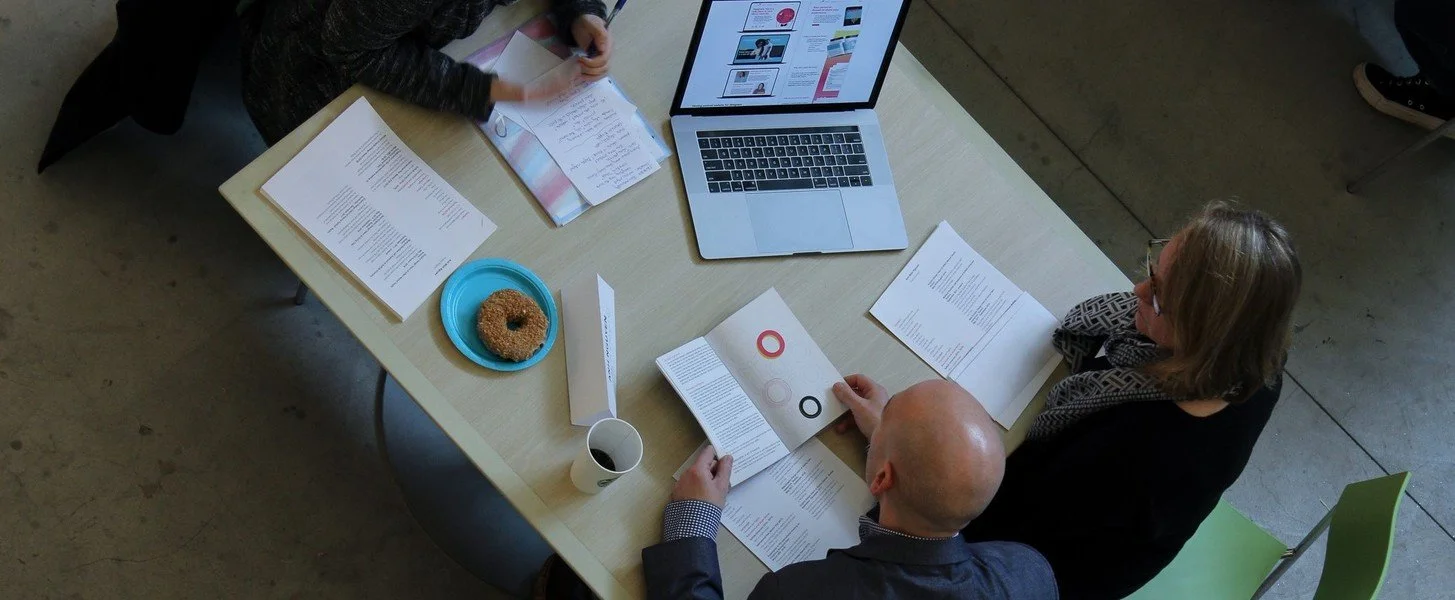Portfolio tips for the emerging designer
Recently, I had the opportunity to meet with emerging designers through AIGA Boston’s Portfolio Review. It’s one of many resources that have come out of the national EMERGE initiative, focused on programming related to employment, growth, leadership, entrepreneurship, and life skills for designers that are just getting started.
Seeking feedback on your personal and professional work takes courage, and with criticism from designers in fast-paced, back-to-back-to-back sessions, that takes some pretty thick skin! The results are worth it though, and will lead to an improved confidence in your work and transformational growth in your early career.
It was inspiring to see the diverse sets of portfolios at the weekend event - which took place at Lesley University’s Lunder Arts Center - and while each designer had their own set of strengths and unique attributes, a few tips were commonly shared. I think they’re worth summarizing here.
In creating your portfolio…
Be selective with what you choose to include.
Show work that you want to do more of, and less of what you want to leave behind. If you don’t have experience in what you want to do, create your own projects that allow you to showcase your developing skills.
Provide context for your work.
Demonstrate and describe the surrounding circumstances and parameters of the project and how it meets the criteria that's been set. For example, a brand identity is not just a logo, it’s a solution to a business problem that enables a company to express itself, so present the design in a way that shows how you addressed the objectives of the business. Was there a challenge or obstacle to overcome? Was messaging a key driver of the design? Was the business in need a greater differentiation from its competitors?
Show your work as it would exist in real life.
Even though the client never printed that amazing tote bag you designed, why not share it anyway? Think a poster design shown in a matted frame on a wall, a responsive website shown as screenshots on a laptop and a mobile device, or an editorial layout shown as a magazine spread on a coffee table. The presentation of your project is equally as important as the design itself.
Bigger pictures.
Whether you choose to create a printed portfolio on tabloid sheets, or a slideshow on laptop or tablet - either of which are options for your consideration - enlarge the images to show as much detail of the work as possible. Less words, less margins, more content.
Discover and highlight the thing that makes you unique.
In meeting with different designers, there were two that stood out, not because of their design skills but because of their backgrounds. One was a former chemistry professor turned data visualization designer. Her background in science gave her the unique qualification of truly understanding the complex data that she was tasked with presenting in a clear and compelling way. Another was a former anthropology major that wants to transition into a UX career as a researcher. How perfect is the connection between studying human behavior to informing product design based on user research? While these both are quite unique cases, think about how you can position yourself differently.
And one last tip, on presenting your portfolio…
In an interview setting, your portfolio is only partly about the design work.
Let it serve mostly as the collateral that enables a discussion between you and the interviewer. Because an interviewer will make a judgement call in just a few seconds, use the presentation of your work to talk about how the project’s challenges, approach, and the process that led to the result.
I hope the designers that participated in the portfolio reviews got value from the feedback and have the information they need to prep for the next stage of their career. And if you’re reading this now, I hope it helps you in some small way, whether you’re thinking about taking a leap, or simply want to improve the presentation of your work.
